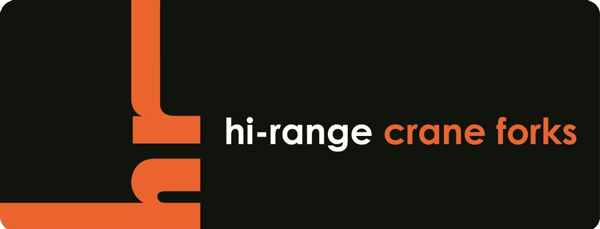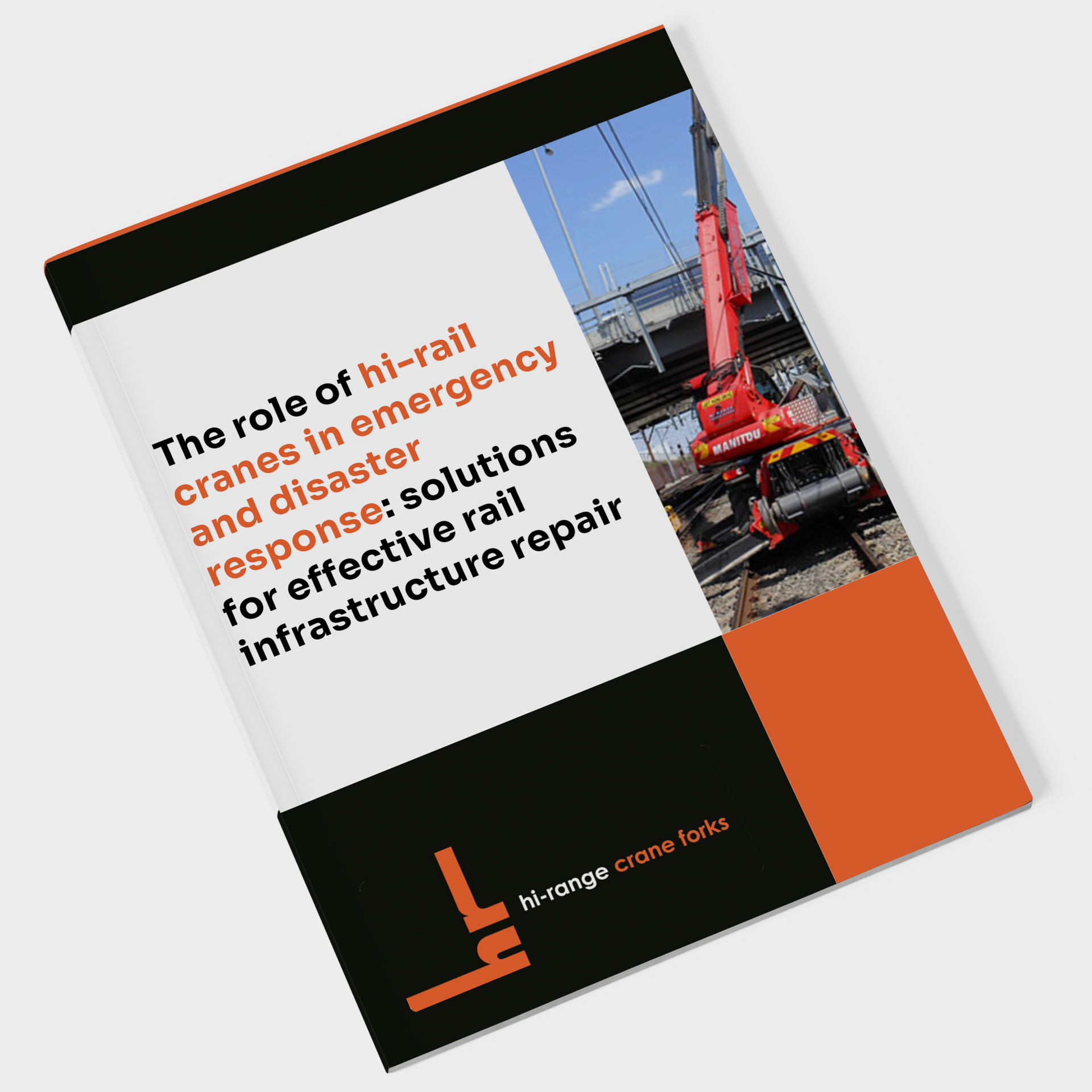17/02/2023
The role of hi-rail cranes in emergency and disaster response: Solutions for effective rail infrastructure repair
Overview
It’s undeniable that Australia is a country that is prone to frequent natural disasters and destructive environmental events, such as bushfires, floods, and cyclones, which can cause significant damage to infrastructure systems.
The current state of Australia’s disaster response preparedness is a complex and multi-faceted issue, and, as such, many strategies have been enacted in recent years to improve the country's ability to protect its infrastructure systems when disaster strikes. However, there are still areas of improvement that need to be addressed, particularly in the Australian rail industry and how improvements can be made for fast and efficient response solutions for damage and rail obstructions within national rail infrastructure networks.
Overall, while progress has been made in improving the rail industry’s disaster preparedness, there are still many areas of improvement that need to be addressed. These include the protection of critical infrastructure systems, the implementation of comprehensive adaptation and mitigation strategies to protect infrastructure systems against the impacts of climate change, and the coordination of greater disaster recovery efforts using new and innovative systems to mitigate the cost of infrastructure delays and equipment transport.
However, one such additional method of improving rail infrastructure’s disaster response that has not been extensively studied or proposed is the adoption of hi-rail cranes, which can be used for emergency response and transport of necessary personnel, equipment and materials in disaster-affected areas. Hi-rail cranes are typically used for track maintenance and repair, but can also be used in various other applications such as debris removal, bridge repairs and inspections, cargo delivery, loading/unloading shipments of hazardous materials, and other ways that make them a valuable addition to the rail industry’s disaster preparedness.
In this paper, we will study these benefits and the ways in which hi-rail cranes can be used in emergency response and disaster recovery operations in the rail industry. This paper will also discuss safety requirements, operational procedures, cost-efficiency, and other aspects of hi-rail crane operations in order to provide a comprehensive overview of their potential as an effective environmental response and disaster preparedness tool.
What you will learn from this publication:
This document aims to address two key topics:
- The current state of Australia’s disaster preparedness and the areas of improvement when it comes to protecting rail infrastructure systems
- The roles in which hi-rail cranes can provide a greater degree of facility when it comes to rail emergency response and management
The current state of disaster preparedness in Australian infrastructure
In recent years, the national rail industry has experienced several major disruptions due to large-scale natural disasters, including Cyclone Debbie in 2017, which caused extensive damage to rail lines in Queensland and New South Wales, and the 2019-2020 bushfires, which damaged large amounts of rail infrastructure in several states.
According to the Australian Journal of Emergency Management, a study by the Australian Bureau of Statistics found that in the case of floods, coastal inundation, cyclones, and storms, existing emergency response measures are not sufficient enough to properly assist in the economic and social recovery of a large number of local Australian communities. As stated by the Journal: “There is consensus within the emergency management community, governments, and those in policy-making areas, for an increased focus on proactive, effective, and value-for-money emergency management measures. [...] An increased focus on proactive emergency management measures would ensure better management of demand for the relevant services, to the greatest extent possible given the many variables that lead to emergencies.”
In addition to other forms of national infrastructure, this shortcoming in the comprehensiveness of disaster response has thus contributed to the Australian rail industry having been severely impacted by environmental disasters such as these in recent years. Catastrophic bushfires, flooding, and extreme heat have all had a major impact on the network, and many of these disasters have caused long-term disruption to national railway networks with their sudden and long-lasting damage to roads, buildings, and tracks. Destruction of this nature requires fast action and repair to avoid long-term disruptions to rail lines and related industry costs.
Climate change plays a large factor in affecting the frequency and severity of natural disasters, and there is a need for more comprehensive adaptation and mitigation strategies to protect rail infrastructure systems. The long-term mitigations for this include the design of infrastructure systems to withstand extreme weather events, and implementing early warning systems, evacuation plans, and contingency measures to minimize the damage caused by natural disasters. One of the key innovations for these solutions is to adopt the use of hi-rail cranes for these methods of immediate emergency response – the benefits of which will be discussed below.
Using hi-rail cranes for emergency response and disaster recovery
As specialised cranes mounted on a railway vehicle that can travel on both rail and road, hi-rail cranes are traditionally used for a variety of rail work tasks such as track maintenance and construction, but their versatility and mobile utilities also offer a number of unique benefits when applied to the emergency response and disaster recovery operations as outlined above.
Hi-rail cranes offer a range of immediate short-term benefits to emergency response, which can also benefit by being adopted as part of major longer-term disaster plans that are being adopted by rail and infrastructure companies. Some of the key ways in which hi-rail cranes benefit disaster response include:
Versatility and mobility
Since hi-rail cranes are designed to be able to travel on both rail and road, thus allowing them to access areas that may be difficult or impossible for other types of road- or rail-based equipment to reach, this makes them particularly useful for emergency response and disaster recovery operations where quick access to affected areas is essential. For example, after a natural disaster such as a flood or a landslide, rail lines may be blocked by debris. Hi-rail cranes can quickly and safely remove this debris, allowing trains to resume service as soon as possible. Additionally, hi-rail cranes can also be used to repair and reconstruct damaged rail infrastructure, such as tracks, bridges, roads, and crossings.
Efficiency, speed, and cost-effectiveness
Another major benefit of utilising hi-rail cranes for emergency operations is the efficiency and speed that comes from their design. Hi-rail cranes are able to lift and place heavy loads, such as rail tracks and sleepers, allowing for the quick repair of damaged tracks and other infrastructure. This can significantly reduce the time required for repairs and minimize the disruption to rail service when using traditional repair equipment. In addition, hi-rail cranes are able to travel to and from emergency response and disaster recovery sites quickly, allowing them to respond to emergencies in a timely manner, which is particularly important where environmental disruptions to rail service can have significant economic consequences.
Safety
Hi-rail cranes also offer significant safety benefits for emergency operations, ensuring the safety of operators and other nearby personnel. They are designed with safety features such as stabilizers which prevent the crane from tipping over, and anti-two block systems which prevent the crane from lifting a load that is too heavy. Additionally, hi-rail cranes are operated by trained and experienced operators, who have the knowledge and skills to safely and effectively use the equipment for the often complicated and precise operations that are a part of emergency operations.
Summary
In the face of continued natural disasters and environmental emergencies that occur in Australia and affect national infrastructure systems, hi-rail cranes can be a critical tool in the emergency response and disaster recovery operations that are being implemented in large portions of the Australian rail industry. By utilising their quick response time, maneuverability, and ability to handle heavy loads, hi-rail cranes can quickly reach disaster zones and provide immediate assistance. This makes them a powerful, reliable, and cost-effective tool for addressing a wide range of issues such as debris removal and track repairs after natural disasters.
In conclusion, hi-rail cranes are an invaluable asset for emergency response and disaster recovery operations in the rail industry due to their versatility, speed, and safety features. By taking the time to ensure that their use is properly understood and managed, rail infrastructure companies can utilise these machines to minimize the economic impacts of natural disasters on the national rail infrastructure, and with their provision of hi-rail cranes for a wide range of local and national rail companies, Hi-Range Crane Forks has been a part of the remediation of weather events such as these.
Get a quote on rail track laying and more
Like what you see? Get in touch with our friendly team for more information on what services we can secure for your next rail construction project. Hi-Range Crane Forks can organise and assist with full-service rail construction packages and individual service contracts alike. From track clearing to installing continuous welded rail, our teams can provide assistance to commercial and civil projects of any size and scope across South Australia and New South Wales.

